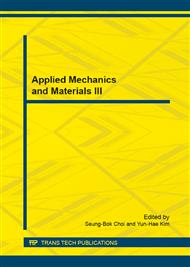p.387
p.395
p.400
p.406
p.410
p.419
p.422
p.427
p.431
Prediction of Steel Bar Corrosion of RC Members Deteriorated by Pre-Existed Chloride and Concrete Carbonation
Abstract:
By simulating solo or combined deterioration action of pre-existed chloride and concrete carbonation, this paper carried out an experimental investigation on the corrosion state of steel bars embedded in concrete with different concrete cover thicknesses and containing different chloride amounts. Comparisons of corrosion current density, corrosion area ratio and corrosion weigh loss of embedded steel bars were made and the effect of combined action was systematically studied. Test results indicated that under the combined action, the corrosion current density measured soon after concrete carbonation test increased with the total chloride amount containing in cover concrete, and the specimens under the combined action exhibited larger value of corrosion current density, corrosion area ratio and mass weight loss than that of the specimens subjected to the solo action. It was further indicated that the mass loss ratio of embedded steel bars at the point of corrosion crack initiation was 1.29% for the specimens with 5mm concrete cover, and the corresponding value of the specimens with 10mm concrete cover was 1.33%.
Info:
Periodical:
Pages:
410-418
Citation:
Online since:
January 2015
Authors:
Keywords:
Price:
Сopyright:
© 2015 Trans Tech Publications Ltd. All Rights Reserved
Share:
Citation:


